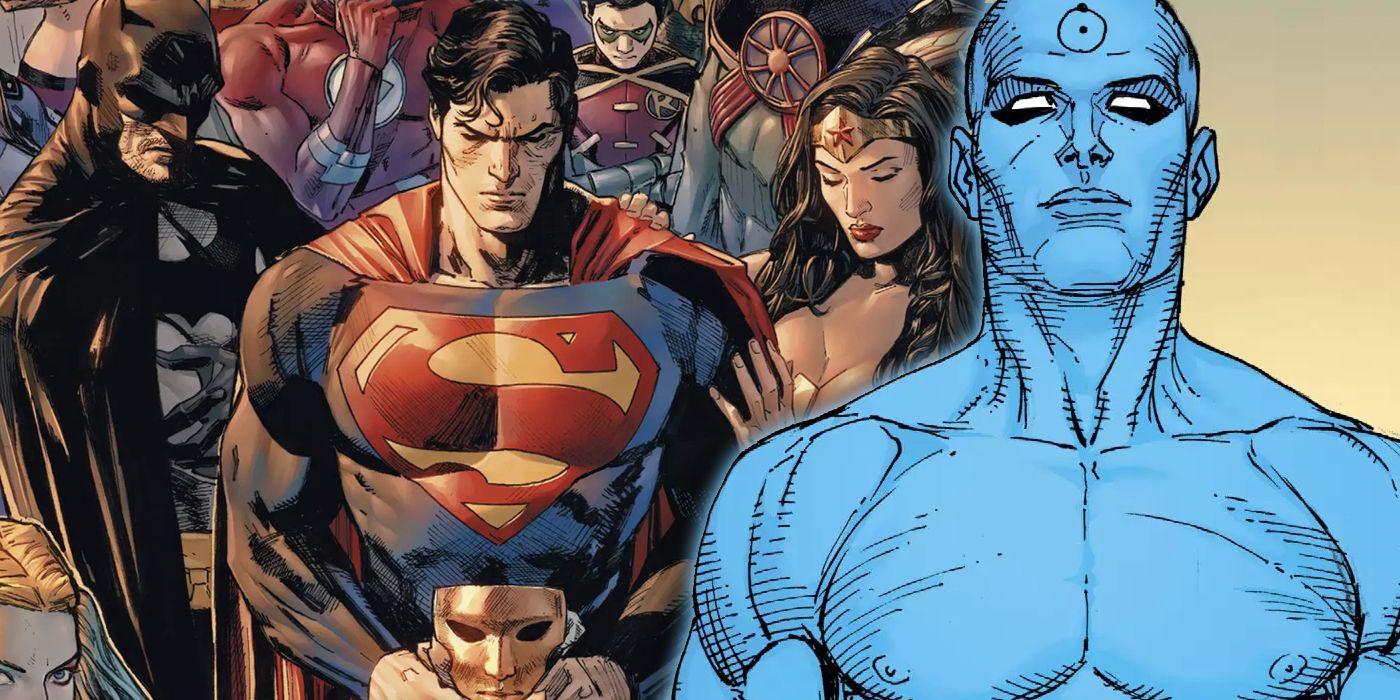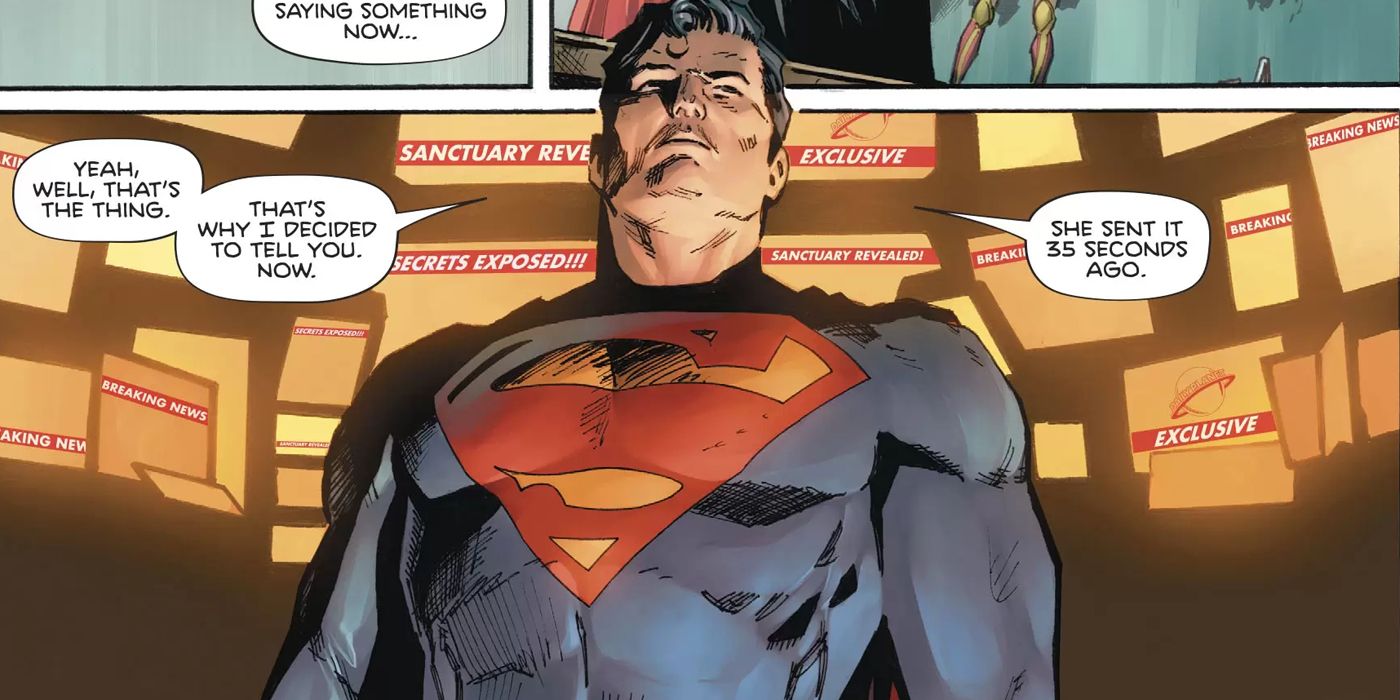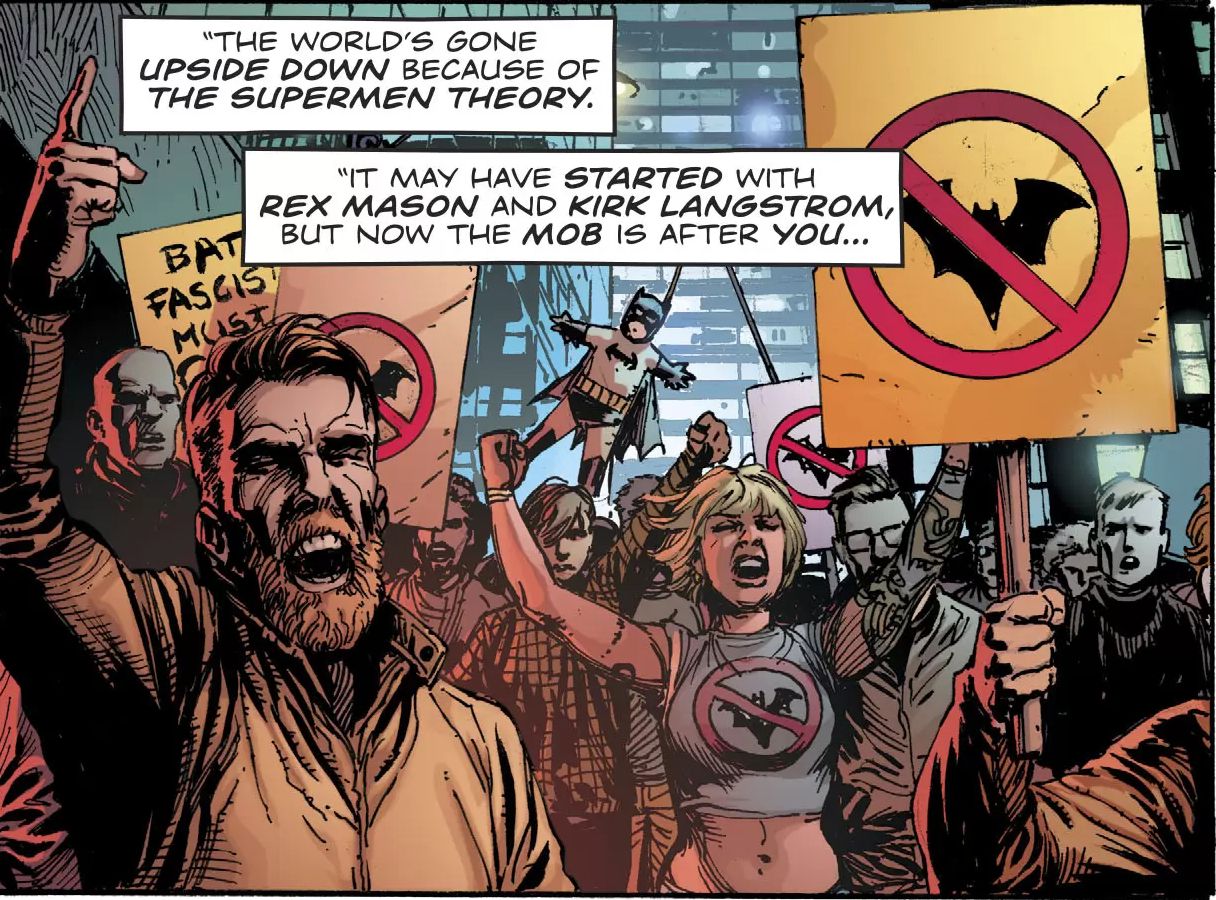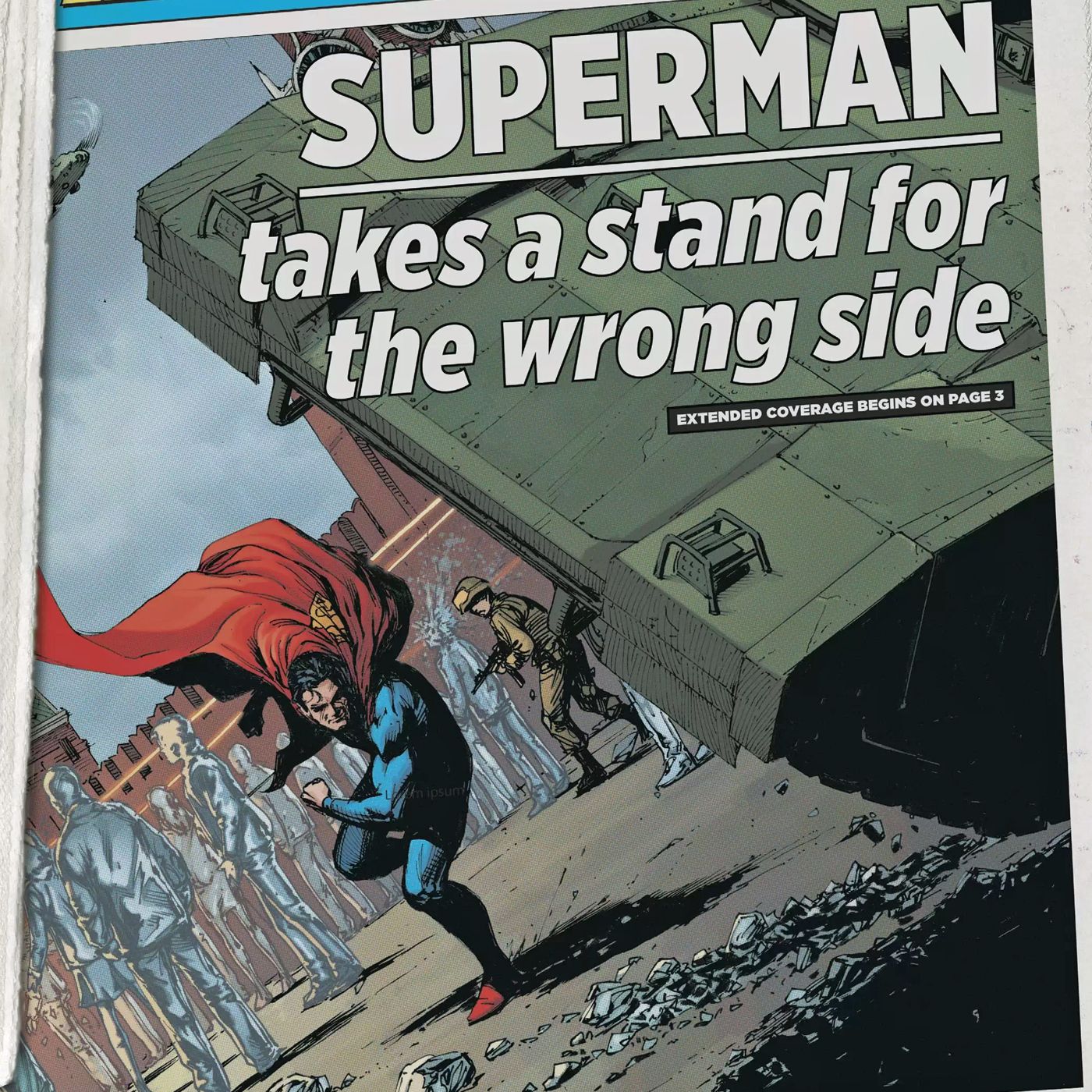Warning: This article has spoilers for the ongoing crossovers Heroes in Crisis, by Tom King, Clay Mann and Travis Moore, and Doomsday Clock, by Geoff Johns and Gary Frank, on sale now.
For the most part, the DC Universe is a pretty good place to be a superhero. Instead of fighting government paranoia-fueled registration acts or protecting a world that hates and fears them, DC's heroes are generally treated as celebrated champions, some of whom have statues and museums built in their honor. Even Batman, a vigilante who operates in a legal gray area, has a notoriously cozy relationship with the Gotham City Police Department.
However, those days are coming to an end in two major ongoing crossovers, Heroes in Crisis and Doomsday Clock. While these event stories might not seem to be too intricately connected, Heroes in Crisis has been introducing a rising anti-superhero sentiment in a once-adoring public that may be the same one that explodes into a global crisis in Doomsday Clock, which takes place roughly one year from "now" in the DC Universe.
RELATED: Heroes in Crisis: Harley Quinn's Sanctuary Visit Was Spurred by the Joker
In Heroes in Crisis, several DC characters have been murdered at Sanctuary, a secret treatment facility where heroes and villains can quietly recover from the psychological trauma of their adventures.
Shortly after the murders, an unknown party started sending videos and other secret information about Sanctuary to Lois Lane. In Heroes in Crisis #4, Lane published a story that publicly revealed Sanctuary's existence and acknowledged the massacre at the center without exposing the personal details of any specific hero.
After the existence of Sanctuary became public knowledge, Superman, DC's most trusted hero, attempted to do some damage control around the public relations disaster. As he tells Lois in Heroes in Crisis #5, the people of the DC Universe are frightened and uneasy with the idea of people with city-leveling amounts of power being in psychological distress. Where the heroes of teams like the Justice League once seemed like untouchable, invulnerable smiling gods, the Sanctuary revelations highlighted the very human faces under those superhero masks.
RELATED: Doctor Manhattan Reveals What Magic Really Is in the DC Universe
To calm nerves, Superman tried to contain the situation by giving a pro-superhero speech on the steps of the Hall of Justice alongside Wonder Woman, another one of the Justice League's most trusted members. While the full fallout of this speech hasn't yet been revealed, we know for certain Superman confirmed the existence of Sanctuary and espoused the virtues of the heroes' "fight for the American Way."
In Doomsday Clock, that particular turn of phrase seems to have come back to haunt Superman and the rest of DC's heroes.
NEXT PAGE: Doomsday Clock's Heroes in Crisis Reference Is the Least of the Two Series' Ties
While Doomsday Clock is largely centered around the first encounter between DC's heroes and Watchmen characters like the reality-reshaping Doctor Manhattan, it also finds DC's heroes dealing with unprecedented international unpopularity caused by the Supermen Theory.
The Supermen Theory questions the concentration of superheroes and supervillains in the United States and puts forth the idea that the U.S. government was secretly responsible for giving superpowers to covert agents.
RELATED: Doomsday Clock Makes A Sinister Retcon to Firestorm’s Origin Story
While that idea initially seemed like a baseless conspiracy, Doomsday Clock has confirmed that the U.S. government's Department of Metahuman Affairs had a role in creating several superpowered individuals, including characters like Man-Bat, Metamorpho, Killer Frost and most notably, the Justice League's Firestorm.
As a result of the Superman Theory, several nations engaged in a metahuman arms race to build nationalized teams of superheroes. When Firestorm traveled to Russia to clear his name, he accidentally turned a crowd of protesters into glass in Doomsday Clock #8. Superman, who still had enough international goodwill to freely cross borders, tried to diffuse the situation, but ended up fighting Russian forces when they started destroying the still-living glass protestors.
Even though a massive, unidentified explosion caused even more damage and took numerous lives, Superman's attack on the Russian forces was seen as the ultimate betrayal of public trust and made headlines around the DC Universe. It even led to the "March Against Metahumans," which culminated with a massive protest outside of the Hall of Justice.
While these moments explicitly invoke similar scenes of civil unrest from Watchmen, they're the kind of moments that would be unimaginable in almost any other era of DC history, and they're the ultimate fermentation of the anti-superhero bias that was originally introduced in Heroes in Crisis.
Outside of a fleeting reference to the death of the Tattooed Man in Heroes in Crisis, Doomsday Clock elevates the other story's ideas about distrusting superheroes in a way that's more subtle than explicit.
RELATED: The Significance of Doomsday Clock's Dead Legionnaire
As the backmatter of Doomsday Clock #2 establishes, the Supermen Theory was developed by Doctor Helga Jace, a scientist from the fictional European country Markovia, about six months after the events of Heroes in Crisis and six months before Doomsday Clock. While that moment hasn't actually appeared anywhere yet, it seems to be the turning point where the vague public distrust of Heroes in Crisis begins to transform into the tangible anti-superhero conspiracy of Doomsday Clock.
It's not clear how either of these crossovers will end yet, but this anti-superhero bias could play a role in DC's next big event, "Year of the Villain." In that line-wide initiative, Lex Luthor will reportedly try to win the hearts and minds of the DCU populace as part of his ultimate plan to defeat Superman and the Justice League. If the people of the DC Universe are still primed to distrust superheroes after Heroes in Crisis and Doomsday Clock, Luthor's plan might just be crazy enough to work.




